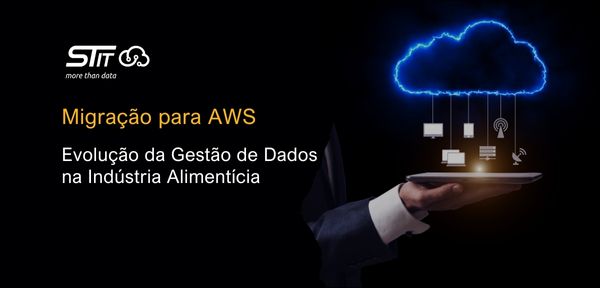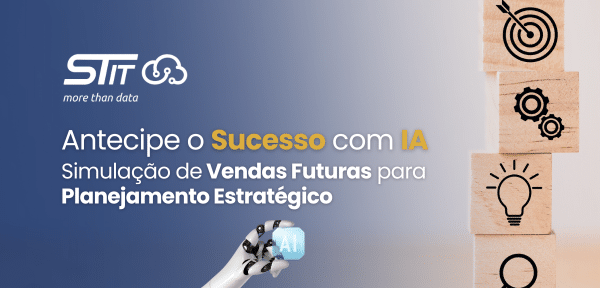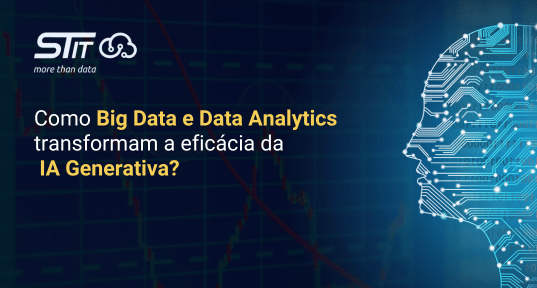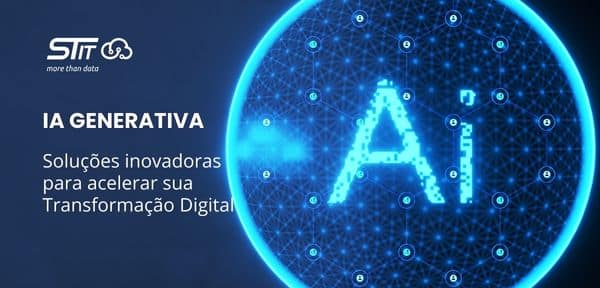Precise and Detailed Analysis for your Data
In today's business scenario, where technology plays a key role, it is imperative to adopt an approach focused on data analysis for making assertive strategic decisions.
Understand how to combine data analysis and strategic decision making to achieve exceptional results. Take advantage of the full potential of your data to base your decisions on concrete and measurable information, driving the sustainable and consistent growth of your business.
In the following article, we will present the main advantages of the data-centric approach and use cases that demonstrate the positive impacts on organizations, based on the experiences of the ST IT Cloud.
To understand the scenario in which decision-making is driven by data, it is essential to delve into the data-driven culture. By adopting this perspective, we move away from making decisions based on intuition or subjective assumptions and instead favor an approach grounded in concrete and measurable information.
Data-driven culture and strategy
Education and awareness
Change starts with education and awareness. It is crucial that all members of the organization, from leadership to operational-level employees, understand the value of data and the importance of a data-centric approach.
Training, workshops and clear communication about the strategic vision of data are key to creating a data-driven culture.
Definition of goals and metrics
A data-driven strategy requires clear definition of goals and relevant metrics. Establish key performance indicators (KPIs) aligned with the organization's strategic objectives.
These metrics will serve as guides for measuring progress and evaluating the effectiveness of data-driven initiatives.
By promoting data education and awareness, and setting relevant goals and metrics, organizations can develop a data-driven culture and a solid strategy, enabling them to make data-informed decisions and drive success consistently and sustainably.
Efficient data collection and storage
Identification of relevant data sources
Identify the internal and external data sources relevant to the organization. This can include transactional data, customer data, social media data, and more.
Understanding what data is valuable for decision-making is critical to efficient collection and storage.
Investment in infrastructure and technology
To adopt a data-centric approach, you need to invest in the right infrastructure and technology. This may include implementing a data management system, adopting cloud storage solutions and using advanced data analysis tools.
Ensure the infrastructure is scalable, secure and capable of handling large volumes of data.
Data analysis and interpretation
Exploratory data analysis
Apply statistical and visualization techniques to explore data and identify patterns, trends and early insights. This can include creating charts, histograms, scatterplots, and statistical summaries.
Advanced modeling and analysis
Based on exploratory analysis, you can move on to more sophisticated techniques such as regression, cluster analysis, customer segmentation, and predictive modeling.
These analyzes allow you to predict future behavior, identify profitable market segments and make informed strategic decisions.
Data visualization
The presentation of results in a clear and visually appealing way is crucial for a better understanding and communication of the extracted insights.
Graphics, Interactive dashboards and reports can help convey information from effective way for different stakeholders.
Use case examples of a data-centric approach
Customization of customer service
A data-centric approach allows companies to more accurately personalize customer service. By analyzing data from past interactions, preferences and purchase history, it is possible to offer personalized experiences and relevant recommendations.
For example, e-commerce companies can use recommendation algorithms to define which
are the best products based on the customer's interests and history, increasing the chances of conversion and loyalty.
Demand forecasting and inventory optimization
Data analytics can help companies forecast future demand based on historical data, seasonality, special events and even weather conditions.
With this forecast, companies can optimize their inventory levels, avoiding excesses, shortages and automating the ordering of new products. This results in greater operational efficiency, cost savings and customer satisfaction.
Energy consumption optimization
A data-centric approach allows energy companies to analyze real-time consumption data and historical consumption data to further identify customer energy consumption patterns.
Based on these insights, it was possible to develop assertive strategies for prospecting new customers, retaining current customers or reducing cancellations, based on the use of historical data and predictive analytics. In addition to grouping customers by risk levels and defining their consumption profile.
price optimization
Using historical sales data, market information, demographics and other factors to dynamically adjust prices. This data-driven approach allows us to plan ahead for price adjustments based on demand, maximizing profit margins and customer satisfaction.
The future of a data-centric approach
As we move forward in In an increasingly data-driven world, it is critical to adopt a data-driven approach to ensure the health of your company.
Artificial intelligence, the machine learning and automation will be key drivers in this journey, enabling more sophisticated, refined analytics and insights in time real world, in addition to faster decision-making.
In addition, it is important that your company continues to evolve, exploring new technologies and tools available.
By seeking strategic partnerships and remaining agile in the face of market changes, it will be prepared to face the challenges and take advantage of the opportunities provided by the data-driven environment.
Those who embrace the power of data will be ahead of the competition, driving innovation, growth and sustainable success in an increasingly data-driven world.
Taking advantage of all the possibilities that data analysis offers is essential to position yourself as a leader in your sector and achieve extraordinary results.
The ST IT Cloud has expertise and a highly qualified team to assist in defining goals and objectives, selecting the best tools and technologies, and implementing efficient data analysis processes according to the specific needs of your business.
Enter in contact with us and find out more.







